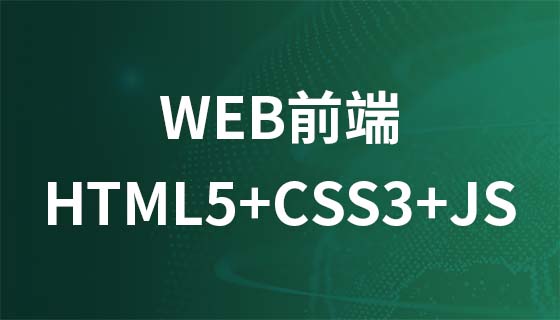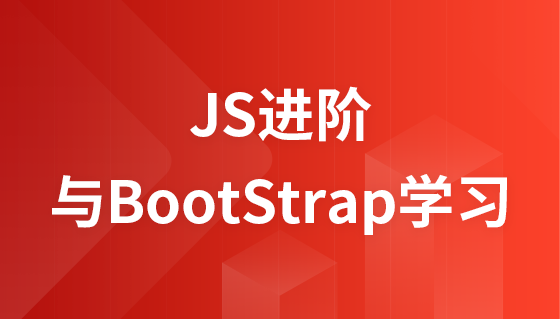
本教程详细探讨了在go语言中如何将复杂的嵌套json数据解析到相应的go结构体中。文章深入分析了常见的解析陷阱,如未导出字段和json字段名与go结构体字段名不匹配的问题,并提供了使用`json`结构体标签进行精确映射的解决方案。此外,教程还强调了通过模块化设计和重用小型结构体来优化代码结构和提升可读性的最佳实践,确保即使面对深度嵌套的json也能实现高效且健壮的数据处理。
在Go语言中处理来自Web API的JSON响应时,一个常见且关键的任务是将这些JSON数据反序列化(Unmarshaling)到Go的结构体(struct)中。当JSON结构变得复杂且包含多层嵌套时,这个过程可能会遇到一些挑战。主要问题通常源于以下两点:
上述问题在处理像abilityDescription1这类嵌套且命名不规范的JSON字段时尤为突出,导致数据无法正确解析到对应的Go结构体中。
Go语言通过结构体标签(struct tags)提供了一种强大而灵活的机制来解决JSON字段名不匹配的问题。json标签允许我们明确指定Go结构体字段与JSON键之间的映射关系。
通过在结构体字段声明后添加反引号()和json:"your_json_key_name",我们可以告诉encoding/json包,当前Go字段应该映射到JSON中名为your_json_key_name`的键。
立即学习“go语言免费学习笔记(深入)”;
示例:
type God struct {
Ability1 string `json:"Ability1"` // JSON键名为 "Ability1"
AttackSpeed float64 `json:"AttackSpeed"` // JSON键名为 "AttackSpeed"
Speed int `json:"Speed"` // JSON键名为 "Speed"
// ... 其他字段
}即使JSON键名与Go结构体字段名完全相同,使用json标签也是一个良好的实践,因为它增加了代码的清晰度和可维护性,并允许未来JSON结构发生微小变化时更容易调整。
面对深度嵌套的JSON,将所有字段定义在一个巨大的结构体中会导致代码难以阅读和维护。更好的方法是将嵌套结构体拆分成独立的、更小的、可重用的结构体。这不仅提高了代码的模块化程度,也使得JSON标签的管理更加清晰。
考虑JSON中重复出现的itemDescription、menuitems和rankitems结构,我们可以将它们定义为独立的Go结构体:
// MenuItem 定义了 JSON 中 menuitems 和 rankitems 数组中的单个项目
type MenuItem struct {
Description string `json:"description"`
Value string `json:"value"`
}
// ItemDescription 定义了 JSON 中 itemDescription 的内容
type ItemDescription struct {
Cooldown string `json:"cooldown"`
Cost string `json:"cost"`
Description string `json:"description"`
MenuItems []MenuItem `json:"menuitems"` // 注意:这里是数组
RankItems []MenuItem `json:"rankitems"` // 注意:这里是数组
SecondaryDescription string `json:"secondaryDescription"`
}
// AbilityDescription 定义了 JSON 中 abilityDescriptionX 的内容
type AbilityDescription struct {
ItemDescription ItemDescription `json:"itemDescription"`
}
// BasicAttack 定义了 JSON 中 basicAttack 的内容
type BasicAttack struct {
ItemDescription ItemDescription `json:"itemDescription"`
}通过这种方式,MenuItem、ItemDescription、AbilityDescription和BasicAttack都可以被独立定义和重用,极大地简化了主God结构体的定义。
结合上述原则,我们可以为提供的JSON数据构建一套完整且正确的Go结构体。请注意,所有字段都已导出(首字母大写),并使用了json标签进行精确映射。
package main
import (
"encoding/json"
"fmt"
)
// MenuItem 定义了 JSON 中 menuitems 和 rankitems 数组中的单个项目
type MenuItem struct {
Description string `json:"description"`
Value string `json:"value"`
}
// ItemDescription 定义了 JSON 中 itemDescription 的内容
type ItemDescription struct {
Cooldown string `json:"cooldown"`
Cost string `json:"cost"`
Description string `json:"description"`
MenuItems []MenuItem `json:"menuitems"` // JSON中是数组
RankItems []MenuItem `json:"rankitems"` // JSON中是数组
SecondaryDescription string `json:"secondaryDescription"`
}
// AbilityDescription 定义了 JSON 中 abilityDescriptionX 的内容
type AbilityDescription struct {
ItemDescription ItemDescription `json:"itemDescription"`
}
// BasicAttack 定义了 JSON 中 basicAttack 的内容
type BasicAttack struct {
ItemDescription ItemDescription `json:"itemDescription"`
}
// God 结构体定义了顶层 JSON 对象的结构
type God struct {
Ability1 string `json:"Ability1"`
AbilityId1 int `json:"AbilityId1"`
AttackSpeed float64 `json:"AttackSpeed"`
Cons string `json:"Cons"`
HP5PerLevel float64 `json:"HP5PerLevel"`
Health int `json:"Health"`
Speed int `json:"Speed"`
AbilityDescription1 AbilityDescription `json:"abilityDescription1"` // 注意这里的标签
AbilityDescription5 AbilityDescription `json:"abilityDescription5"` // 注意这里的标签
BasicAttack BasicAttack `json:"basicAttack"` // 注意这里的标签
Id int `json:"id"`
RetMsg interface{} `json:"ret_msg"` // ret_msg 为 null,使用 interface{} 或 *string
// 假设还有其他未在示例JSON中出现的字段,但可能存在于完整的API响应中
// Ability2 string `json:"Ability2"`
// Ability3 string `json:"Ability3"`
// Ability4 string `json:"Ability4"`
// Ability5 string `json:"Ability5"`
// AbilityId2 int `json:"AbilityId2"`
// AbilityId3 int `json:"AbilityId3"`
// AbilityId4 int `json:"AbilityId4"`
// AbilityId5 int `json:"AbilityId5"`
// AttackSpeedPerLevel float64 `json:"Attack_speed_per_level"` // 注意 JSON 键名
// HealthPerFive int `json:"Health_per_five"`
// HealthPerLevel int `json:"Health_per_level"`
// ... (其他字段需要根据实际JSON键名添加)
}
func main() {
jsonResponse := []byte(`
{
"Ability1": "Noxious Fumes",
"AbilityId1": 7812,
"AttackSpeed": 0.86,
"Cons": "",
"HP5PerLevel": 0.47,
"Health": 360,
"Speed": 350,
"abilityDescription1": {
"itemDescription": {
"cooldown": "12s",
"cost": "60/70/80/90/100",
"description": "Agni summons a cloud of noxious fumes at his ground target location, doing damage every second. Firing any of Agni's abilities into the fumes detonates the gas, stunning all enemies in the radius.",
"menuitems": [
{
"description": "Ability:",
"value": "Ground Target"
},
{
"description": "Affects:",
"value": "Enemy"
},
{
"description": "Damage:",
"value": "Magical"
},
{
"description": "Radius:",
"value": "20"
}
],
"rankitems": [
{
"description": "Damage per Tick:",
"value": "10/20/30/40/50 (+5% of your magical power)"
},
{
"description": "Fumes Duration:",
"value": "10s"
},
{
"description": "Stun Duration:",
"value": "1s"
}
],
"secondaryDescription": ""
}
},
"abilityDescription5": {
"itemDescription": {
"cooldown": "",
"cost": "",
"description": "After hitting with 4 basic attacks, Agni will gain a buff. On the next cast of Flame Wave or Rain Fire, all enemies hit by those abilities will be additionally set ablaze, taking damage every .5s for 3s.",
"menuitems": [
{
"description": "Affects:",
"value": "Enemy"
},
{
"description": "Damage:",
"value": "Magical"
}
],
"rankitems": [
{
"description": "Damage per Tick:",
"value": "5 (+10% of your magical power)"
}
],
"secondaryDescription": ""
}
},
"basicAttack": {
"itemDescription": {
"cooldown": "",
"cost": "",
"description": "",
"menuitems": [
{
"description": "Damage:",
"value": "34 + 1.5/Lvl (+20% of Magical Power)"
},
{
"description": "Progression:",
"value": "None"
}
],
"rankitems": [],
"secondaryDescription": ""
}
},
"id": 1737,
"ret_msg": null
}
`)
var god God
err := json.Unmarshal(jsonResponse, &god)
if err != nil {
fmt.Println("Error unmarshaling JSON:", err)
return
}
fmt.Printf("Successfully unmarshaled God data:\n")
fmt.Printf("Ability1: %s\n", god.Ability1)
fmt.Printf("Ability Description 1 Cooldown: %s\n", god.AbilityDescription1.ItemDescription.Cooldown)
fmt.Printf("Ability Description 1 Menu Items: %+v\n", god.AbilityDescription1.ItemDescription.MenuItems)
fmt.Printf("Basic Attack Description: %s\n", god.BasicAttack.ItemDescription.Description)
fmt.Printf("Basic Attack Menu Items: %+v\n", god.BasicAttack.ItemDescription.MenuItems)
}注意事项:
在Go语言中解析嵌套JSON的关键在于:
遵循这些最佳实践,您将能够高效、健壮地处理Go应用程序中的各种复杂JSON数据。
以上就是Go语言中嵌套JSON响应到嵌套结构体的解析指南的详细内容,更多请关注php中文网其它相关文章!

每个人都需要一台速度更快、更稳定的 PC。随着时间的推移,垃圾文件、旧注册表数据和不必要的后台进程会占用资源并降低性能。幸运的是,许多工具可以让 Windows 保持平稳运行。




Copyright 2014-2025 https://www.php.cn/ All Rights Reserved | php.cn | 湘ICP备2023035733号